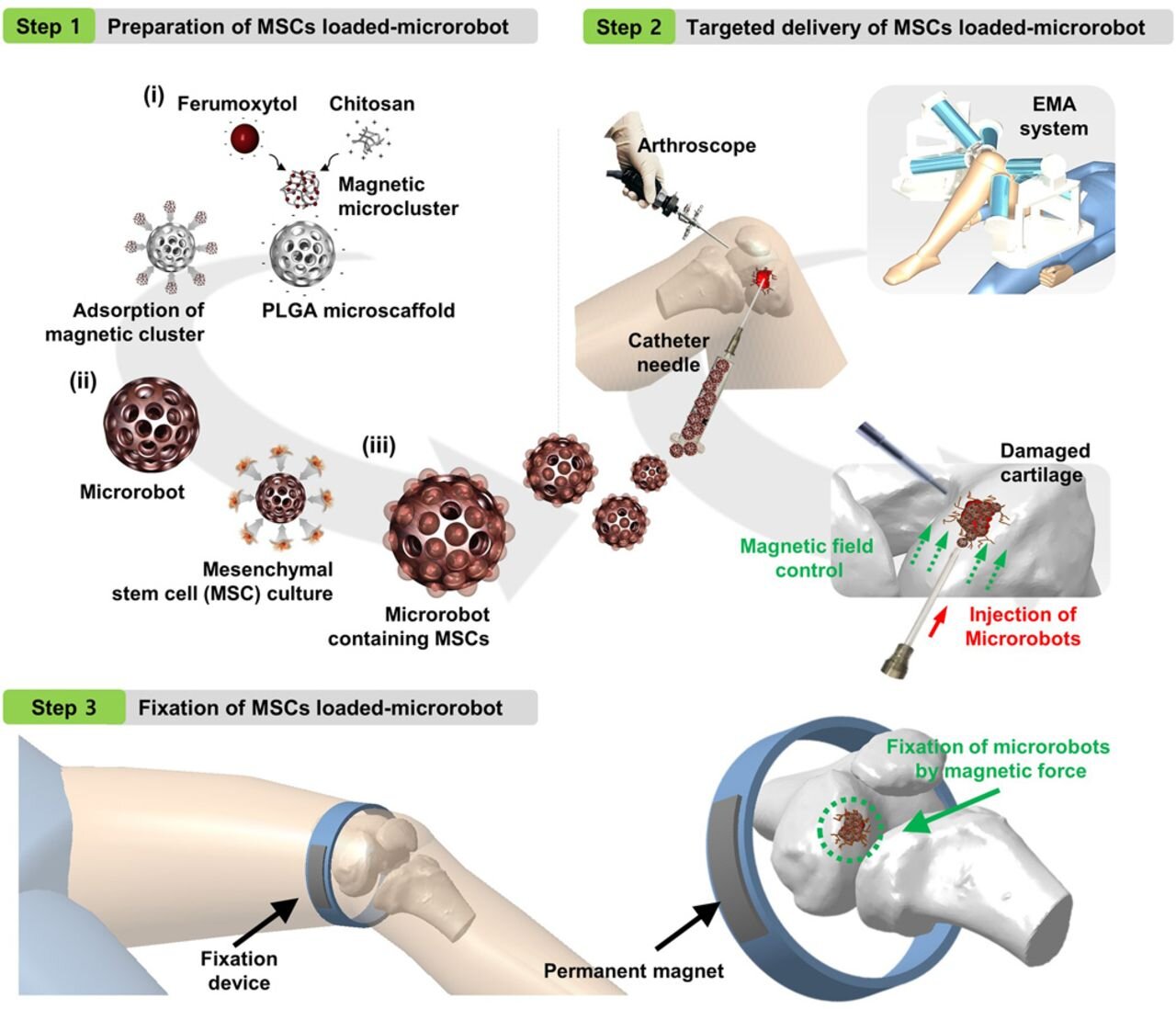
A team of researchers affiliated with multiple institutions in China and one in Korea has developed a micro-robot system that regenerated knee cartilage in rabbits. In their paper published in the journal Science Advances, the group describes their system and how well it worked.
In many developed countries, the population is growing older, which means aging-related health conditions are on the rise. One such ailment common in older people is degeneration of the cartilage in the knees and hips. When this happens, a common treatment is replacing the knee or hip joint with an artificial device. In this new effort, the researchers have found a better way to handle the problem—regrowing the cartilage.
Prior research has shown that mesenchymal stem cells found in bone marrow and fat can be coaxed into growing into cartilage cells. And researchers have also found that stem cells can be used to repair damaged cartilage. The challenge is placing the cells in the body where they are needed and keeping them in place until they attach to the surrounding tissue. In this new effort, the researchers have created a system that was able to overcome these hurdles—at least in rabbits.
The researchers created tiny hollow balls with holes out of a polymer called PLGA. The balls were then covered with a mixture of ferumoxytol (an iron mixture) and chitosan (a type of sugar). The next step involved filling the balls with cultured mesenchymal stem cells. The balls were injected into the knees of test rabbits with damaged knee cartilage (the researchers cut notches into it) and the rabbits were fitted with magnets to keep the balls in place.
After three weeks, the researchers found that those rabbits with the treated knees showed signs of cartilage rejuvenation—and the hollow balls were degrading as expected. Those rabbits that went untreated saw no change in their cartilage. The team has plans to test their system with animals that have more human-like knees, and if all goes well, to begin testing in human patients.
More information: Gwangjun Go et al. Human adipose–derived mesenchymal stem cell–based medical microrobot system for knee cartilage regeneration in vivo, Science Robotics (2020). DOI: 10.1126/scirobotics.aay6626
© 2020 Science X Network
Citation: Microrobot system regenerates knee cartilage in rabbits (2020, January 29) retrieved 29 January 2020 from https://techxplore.com/news/2020-01-microrobot-regenerates-knee-cartilage-rabbits.html
This document is subject to copyright. Apart from any fair dealing for the purpose of private study or research, no part may be reproduced without the written permission. The content is provided for information purposes only.
